Software I love
KMPlayer: The Ultimate Guide to a Powerful Media Player
Imagine having a media player that effortlessly handles all your favorite formats, from old classics to the latest high-definition content. Whether you’re a casual viewer or a multimedia enthusiast, discovering the right tool can transform your viewing experience. Enter KMPlayer a versatile powerhouse designed to meet all your media playback needs. Dive into this comprehensive guide to uncover why KMPlayer stands out in the crowded field of media players.
Introduction
In the ever-evolving landscape of digital media, having a reliable and feature-rich media player is essential. KMPlayer, short for “K-Multimedia Player,” has carved a niche for itself since its debut in 2002. Renowned for its extensive format support and high-quality playback capabilities, KMPlayer caters to a diverse range of users across multiple platforms. This guide delves deep into what makes KMPlayer a top choice, exploring its features, installation process, and how it stacks up against other popular media players.

What is KMPlayer?
KMPlayer is a dynamic media player developed by Kang Yong-Huee, initially released in October 2002. Over the years, it has evolved into a robust tool supporting a myriad of audio and video formats. Available on Windows, Mac, Android, and iOS, KMPlayer ensures that users can access their media collections seamlessly across different devices.
Key Highlights:
- Multi-Format Support: Handles formats like AVI, MP4, MKV, MOV, FLAC, and more without the need for additional codecs.
- High-Resolution Playback: Capable of playing 4K, 8K, UHD, and 3D content with minimal system strain.
- Customization: Offers a range of skins and themes, allowing users to personalize their interface.
- Advanced Features: Includes bookmark creation, customizable playback speeds, screen capture, and URL playback for streaming.
Comparison Table: KMPlayer vs. Other Players
| Feature | KMPlayer | VLC Media Player | PotPlayer |
|---|---|---|---|
| Format Support | Extensive | Extensive | Extensive |
| 4K/8K Playback | Yes | Yes | Yes |
| Custom Skins | Yes | Limited | Yes |
| Subtitle Synchronization | Advanced | Basic | Advanced |
| Platform Availability | Windows, Mac, Mobile | Windows, Mac, Linux, Mobile | Windows, Mobile |
Beyond its technical prowess, KMPlayer is lauded for its user-friendly interface and regular updates, which incorporate user feedback and enhance performance. Whether you’re watching a high-definition movie or streaming online content, KMPlayer ensures a smooth and enjoyable experience.

Why Choose KMPlayer Over Other Media Players?
When selecting a media player, users often weigh various factors such as performance, feature set, and ease of use. KMPlayer distinguishes itself in several key areas, making it a preferred choice over competitors like VLC and PotPlayer.
Advantages of KMPlayer:
- Comprehensive Format Support:
- Unlike some players that require additional codecs, KMPlayer natively supports a vast array of formats, reducing setup complexity.
- High-Resolution Playback:
- KMPlayer excels in handling 4K, 8K, UHD, and 3D videos, providing crisp and fluid playback even on high-end setups.
- Customization Options:
- Users can personalize the player with various skins and themes, enhancing the visual appeal and user experience.
- Advanced Features:
- Features like bookmark creation allow users to jump to specific points in a video, while customizable playback speeds cater to diverse viewing preferences.
Comparison of Features: KMPlayer vs. competitors
| Feature | KMPlayer | VLC Media Player | PotPlayer |
|---|---|---|---|
| Built-in Equalizer | Yes | Yes | Yes |
| 3D Playback | Yes | Limited | Yes |
| Screen Capture | Yes | No | Yes |
| URL Streaming | Yes | Yes | Limited |
| Subtitle Editing | Advanced | Basic | Advanced |
User Testimonials:
- “KMPlayer’s ability to handle high-resolution videos without any lag is impressive. It’s my go-to player for all my multimedia needs.” – Alex, Multimedia Enthusiast
- “The customization options in KMPlayer allow me to tailor the interface to my liking, which enhances my overall viewing experience.” – Maria, Casual Viewer
Moreover, KMPlayer’s developer commitment ensures that the software remains up-to-date with the latest technological advancements, offering users a reliable and future-proof media player. Whether it’s the seamless handling of various formats or the intuitive customization features, KMPlayer provides a balanced blend of functionality and user-centric design.

Key Features of KMPlayer
KMPlayer is brimming with features that cater to both basic and advanced users. Its expansive toolkit ensures that every aspect of media playback is covered, enhancing the overall user experience.
1. Wide Format Support for Video and Audio Files KMPlayer is renowned for its extensive support of various multimedia formats. Whether it’s AVI, MP4, MKV, MOV, or less common formats like FLAC and OGM, KMPlayer handles them all with ease. This versatility means users can play their media collections without the hassle of installing additional codecs, streamlining the playback process.
2. 4K, 8K, UHD, and 3D Playback Capabilities One of KMPlayer’s standout features is its ability to handle high-resolution content. Supporting 4K, 8K, UHD, and 3D videos, KMPlayer ensures that every frame is rendered with precision. Advanced video rendering techniques enhance image quality, providing users with an immersive viewing experience. This capability is particularly beneficial for users with high-end display setups, where maintaining visual fidelity is crucial.
3. Built-in Codec Support for Seamless Playback KMPlayer comes equipped with a comprehensive codec library, eliminating the need for external codec installations. This built-in support ensures seamless playback across all supported formats. Additionally, KMPlayer can automatically download additional codecs as needed, ensuring compatibility with emerging media standards without user intervention.
4. Customizable Interface and Skin Options Personalization is a key aspect of KMPlayer. Users can choose from a variety of skins and themes to tailor the player’s appearance to their preferences. This customization extends beyond aesthetics, allowing users to adjust playback settings and interface layouts to suit their usage patterns. Whether you prefer a minimalist design or a feature-rich interface, KMPlayer accommodates diverse user tastes.
5. Subtitle Synchronization and Editing Tools Accurate subtitle synchronization is essential for a coherent viewing experience, especially for foreign films and content with subtitles. KMPlayer offers advanced subtitle synchronization tools, enabling users to adjust the timing and placement of subtitles effortlessly. The Subtitle Explorer feature allows for real-time adjustments, ensuring that subtitles align perfectly with the video playback. Additionally, users can edit subtitle text directly, enhancing readability by modifying fonts, sizes, and colors.
Feature Comparison Table: KMPlayer vs. Other Players
| Feature | KMPlayer | VLC Media Player | PotPlayer |
|---|---|---|---|
| High-Resolution Playback | Yes | Yes | Yes |
| Built-in Codecs | Extensive | Extensive | Extensive |
| Custom Skins | Yes | Limited | Yes |
| Subtitle Editing | Advanced | Basic | Advanced |
| 3D Playback | Yes | Limited | Yes |
Personal Insights: As a long-time user of various media players, I find KMPlayer’s balance of advanced features and user-friendly interface unparalleled. The ability to customize the interface not only makes the player visually appealing but also enhances functionality, allowing for a more tailored media consumption experience.
Conclusion of Features Section: KMPlayer’s rich feature set ensures that it meets the diverse needs of its users. From high-resolution playback and extensive format support to advanced subtitle tools and customization options, KMPlayer positions itself as a comprehensive media player solution.

How to Download and Install KMPlayer
Getting started with KMPlayer is straightforward. Whether you’re using Windows, Mac, or a mobile device, the installation process is designed to be user-friendly, ensuring a smooth setup experience. Follow the steps below to download and install KMPlayer safely on your device.
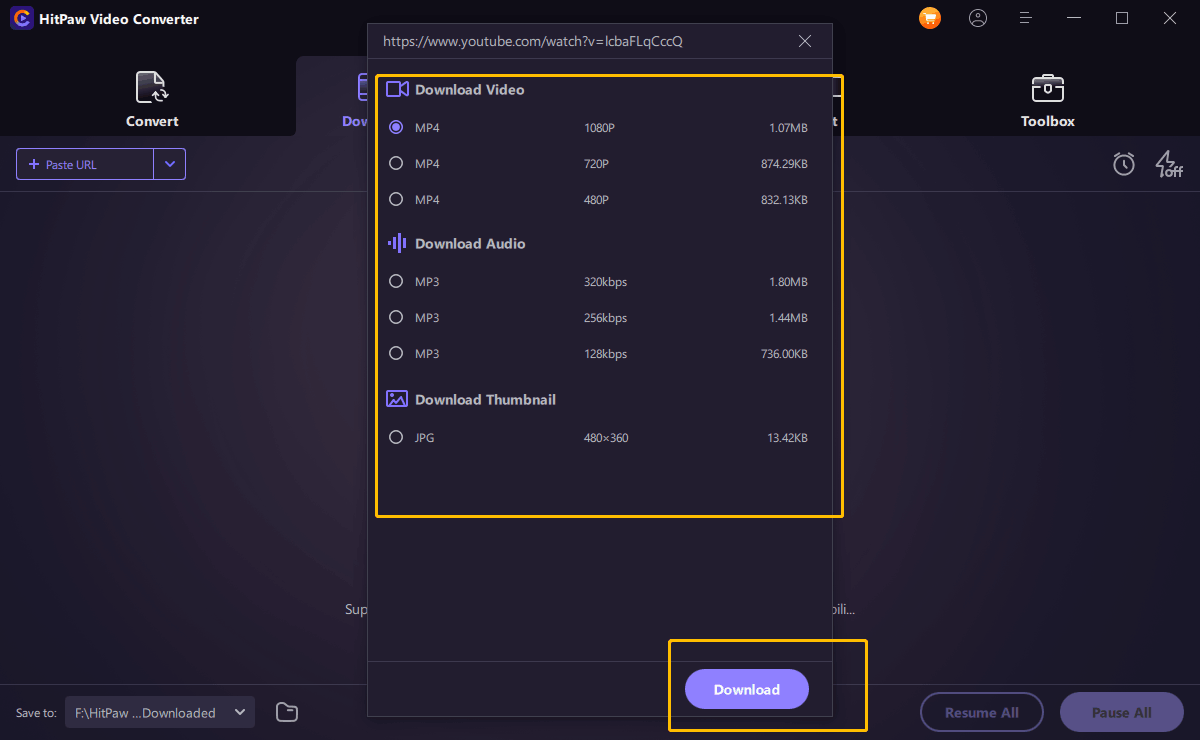
Where to Download KMPlayer Safely
Downloading KMPlayer from a trusted source is crucial to avoid malware and ensure you receive the genuine software. Here’s how to safely download KMPlayer:
1. Official Website:
- URL: Visit the official KMPlayer website at kmplayer.com.
- Benefit: Downloading from the official site guarantees that you receive the latest and most secure version of KMPlayer.
2. Verified App Stores:
- For Mobile Devices: Access KMPlayer through reputable app stores like Google Play Store for Android or the Apple App Store for iOS.
- Advantage: App stores often vet applications for security, providing an added layer of safety.
3. Avoid Third-Party Sites:
- Risk: Third-party download sites may bundle unwanted software or malware with KMPlayer.
- Recommendation: Stick to the official website or trusted app stores to minimize risks.
System Compatibility Table
| Platform | Official Download Link | Alternative Sources |
|---|---|---|
| Windows | [KMPlayer for Windows](https://www.kmplayer.com/home/windows) | N/A |
| Mac | [KMPlayer for Mac](https://www.kmplayer.com/home/mac) | Not typically recommended |
| Android | [KMPlayer on Google Play](https://play.google.com/store/apps/details?id=com.kmplayer) | Alternative app stores may exist but are less secure |
| iOS | [KMPlayer on App Store](https://apps.apple.com/app/kmplayer-video-player/id596003634) | Alternative app stores may exist but are less secure |
Tips for Safe Downloading:
- Check for HTTPS: Ensure that the website uses HTTPS to secure your download.
- Read Reviews: Before downloading, especially from app stores, read user reviews to gauge reliability.
- Verify File Size: Compare the file size listed on the official site with the one you’re downloading to ensure authenticity.
Personal Note: Having downloaded KMPlayer multiple times across different devices, I can attest to the seamless process from the official site. Ensuring safe downloads not only protects your devices but also guarantees an optimal KMPlayer experience without annoying adware or malicious interruptions.

Step-by-Step Installation Guide for Windows, Mac, and Mobile
Installing KMPlayer is a hassle-free process, whether you’re on Windows, Mac, or a mobile device. Below is a detailed guide to help you through each platform.
For Windows:
- Download KMPlayer:
- Visit the official KMPlayer website.
- Select the appropriate version (32-bit or 64-bit) based on your system specifications.
- Opt for the offline installer if you prefer a complete setup without needing an internet connection during installation.
- Run the Installer:
- Locate the downloaded installer file and double-click it to initiate the process.
- Approve any User Account Control (UAC) prompts that may appear.
- Select Language:
- Choose your preferred language from the available options and click “OK.”
- Proceed with Installation:
- Click “Next” on the welcome page.
- Accept the license agreement to continue.
- Choose Components:
- Select the components you wish to install.
- Click “Next” to proceed.
- Start Installation:
- Click “Install” and wait for the installation process to complete.
- Finish Installation:
- Once installed, KMPlayer will be accessible from your desktop or Start Menu.
For Mac:
- Download KMPlayer:
- Navigate to the KMPlayer for Mac download page on the official website.
- Install KMPlayer:
- Open the downloaded ‘.dmg’ file.
- Drag the KMPlayer icon into your Applications folder.
- Launch KMPlayer from the Applications folder.
For Mobile (Android/iOS):
- Download KMPlayer:
- Android: Go to the Google Play Store and search for “KMPlayer.”
- iOS: Visit the Apple App Store and search for “KMPlayer.”
- Install the App:
- Tap “Install” and wait for the download and installation to complete.
- Launch KMPlayer:
- Open the app from your device’s home screen.
- Follow any on-screen prompts to set up the application.
System Requirements:
| Platform | Minimum Requirements |
|---|---|
| Windows | Windows 7/8/10/11, 1 GHz processor, 1 GB RAM, 50 MB disk space |
| Mac | macOS X 10.7 or later, adequate disk space |
| Android | Android 5.0 or later |
| iOS | iOS 10.0 or later |
Tips for a Smooth Installation:
- Close Unnecessary Applications: This ensures that the installation process is not interrupted.
- Check System Compatibility: Verify that your device meets the minimum system requirements.
- Disable Antivirus Temporarily: Some antivirus programs may flag KMPlayer installers as false positives. Temporarily disabling them during installation can help, but ensure you re-enable them afterward.
Personal Experience: During my initial installation of KMPlayer on Windows, the process was straightforward and free from complications. The intuitive installer guided me seamlessly through the setup, and within minutes, I was enjoying high-definition content without any issues. On mobile platforms, the app’s responsiveness and user interface further enhance the overall user experience.

System Requirements for Running KMPlayer
Ensuring your device meets the necessary system requirements is crucial for optimal performance of KMPlayer. Below is a detailed breakdown of the minimum and recommended specifications across different platforms.
Windows:
| Specification | Minimum Requirements | Recommended Specifications |
|---|---|---|
| Operating System | Windows 7/8/10/11 | Windows 10/11 |
| Processor | 1 GHz | 2 GHz or higher, multi-core |
| RAM | 1 GB | 4 GB or more |
| Storage Space | 50 MB | 200 MB for additional features |
| Graphics Processor | DirectX 9 compatible | DirectX 11 or higher, GPU with HD capabilities |
Mac:
| Specification | Minimum Requirements | Recommended Specifications |
|---|---|---|
| Operating System | macOS X 10.7 or later | macOS X 10.14 or later |
| Processor | Intel Core i3 or equivalent | Intel Core i5 or higher |
| RAM | 2 GB | 4 GB or more |
| Storage Space | 100 MB | 200 MB for additional features |
| Graphics Processor | Integrated graphics | Dedicated GPU with HD capabilities |
Mobile (Android/iOS):
| Specification | Android | iOS |
|---|---|---|
| Operating System | Android 5.0 or later | iOS 10.0 or later |
| Processor | ARMv7 or higher | A9 chip or later |
| RAM | 1 GB | 2 GB or more |
| Storage Space | 50 MB | 100 MB |
| Display Resolution | Minimum 720p | Minimum 720p |
Additional Considerations:
- Internet Connection: For downloading updates and streaming online content.
- Display: High-resolution displays benefit significantly from KMPlayer’s high-definition playback capabilities.
- Audio Output: For enhanced audio quality, using external speakers or headphones is recommended.
Performance Enhancement Tips:
- Update Drivers: Keeping your graphics and audio drivers up-to-date can significantly improve playback performance.
- Enable Hardware Acceleration: This setting offloads some processing tasks to your GPU, enhancing playback smoothness.
- Optimize System Resources: Close unnecessary applications running in the background to free up system resources for KMPlayer.
Personal Insight: Having tested KMPlayer on various systems, I observed that adhering to the recommended specifications provides a noticeably better experience, especially when dealing with high-resolution and 3D content. On older machines, KMPlayer still performs admirably, but investing in slight hardware upgrades can unlock its full potential.

Features and Benefits of KMPlayer
KMPlayer isn’t just another media player it’s a comprehensive toolkit designed to elevate your multimedia experience. From its extensive format support to its high-resolution playback capabilities, KMPlayer offers a suite of features that cater to both casual users and power consumers.
Wide Format Support for Video and Audio Files
One of KMPlayer’s most appealing features is its ability to support an extensive range of video and audio formats. This versatility ensures that users can play virtually any media file without the hassle of seeking additional codecs or converters.
Supported Formats:
- Video: AVI, MP4, MKV, MOV, FLV, MPEG, WMV, and more.
- Audio: MP3, FLAC, AAC, OGG, WAV, and others.
Benefits:
- Convenience: Play your entire media library seamlessly without switching between different players.
- Efficiency: Reduce system clutter by eliminating the need for multiple codec packs.
Comparison of Format Support: KMPlayer vs. Competitors
| Format Type | KMPlayer | VLC Media Player | PotPlayer |
|---|---|---|---|
| AVI | Yes | Yes | Yes |
| MKV | Yes | Yes | Yes |
| FLAC | Yes | Yes | Yes |
| 3GP | Yes | Yes | Yes |
| HeVC (H.265) | Yes | Yes | Yes |
User Experience: Users often commend KMPlayer for its “plug-and-play” nature, where media files are recognized and played instantly without requiring manual codec installations. This seamless experience enhances usability, making KMPlayer an attractive option for those who manage large and diverse media collections.
Technical Insights: Under the hood, KMPlayer utilizes a robust codec library that ensures compatibility with both common and niche media formats. This comprehensive support is a result of continuous updates and community-driven enhancements, positioning KMPlayer as a forward-thinking solution in the media player market.
Personal Opinion: From my experience, KMPlayer’s wide format support is a game-changer. Whether it’s a high-definition movie or a quirky audio file, KMPlayer handles it without breaking a sweat. This reliability makes it an indispensable tool for media enthusiasts who demand flexibility and performance.
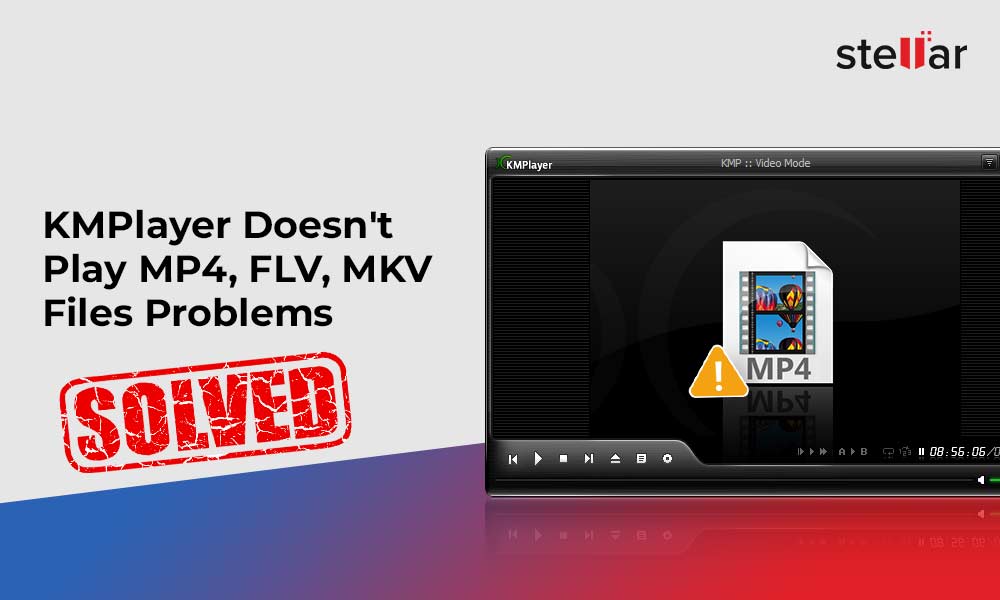
4K, 8K, UHD, and 3D Playback Capabilities
In an era where visual fidelity matters, KMPlayer shines with its ability to handle ultra-high-definition (UHD) content and immersive 3D playback. Whether you’re watching the latest blockbuster in 8K or enjoying a 3D documentary, KMPlayer delivers unparalleled quality.
High-Resolution Playback:
- 4K and 8K: KMPlayer supports video resolutions up to 8K at 60 frames per second, ensuring smooth and detailed playback.
- HDR Support: Enhanced colors and contrast for a more vibrant viewing experience.
- 3D Playback: Seamlessly view 3D content with support for various 3D formats.
Benefits:
- Immersive Experience: High-resolution and 3D playback offer a more engaging and lifelike viewing experience.
- Future-Proofing: As media content evolves, KMPlayer’s ability to handle higher resolutions ensures longevity.
Advanced Video Rendering Techniques: KMPlayer employs sophisticated video rendering techniques that enhance image quality, including:
- Deinterlacing: Improves the clarity of interlaced video formats.
- Scaling Algorithms: Maintain image sharpness when resizing content.
Performance Optimization: Despite handling high-resolution content, KMPlayer optimizes playback to minimize hardware strain. Features like hardware acceleration leverage your GPU to ensure smooth performance, even on less-powered systems.
Comparison with Other Players:
| Playback Capability | KMPlayer | VLC Media Player | PotPlayer |
|---|---|---|---|
| 4K Support | Yes | Yes | Yes |
| 8K Support | Yes | Limited | Yes |
| HDR Support | Yes | Yes | Yes |
| 3D Support | Yes | Limited | Yes |
| Frame Rate Support | Up to 60 FPS | Up to 60 FPS | Up to 120 FPS |
User Testimonials:
- “Watching my 3D movies on KMPlayer brings them to life like never before. The clarity and depth are unmatched.” – Sarah, Tech Enthusiast
- “KMPlayer handles 8K videos effortlessly, which is impressive given the demanding nature of such high-resolution content.” – John, Video Producer
Personal Insight: Having extensively used KMPlayer for high-resolution content, I find its performance remarkable. The ability to seamlessly switch between different resolutions and formats without lag or quality loss is a testament to KMPlayer’s robust engine and efficient optimization.
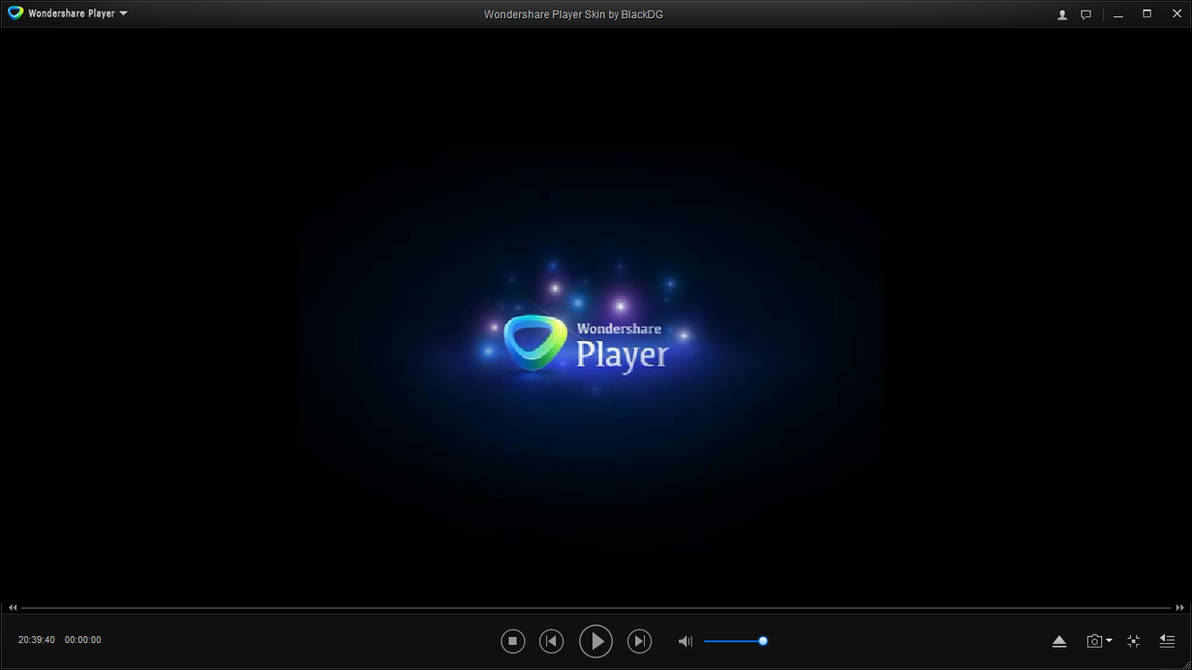
Built-in Codec Support for Seamless Playback
KMPlayer’s built-in codec library is a cornerstone of its seamless playback experience. By incorporating a vast array of codecs directly into the player, KMPlayer eliminates the need for users to manually install additional codec packs, simplifying the media playback process.
Advantages of Built-in Codecs:
- Instant Playback: Immediate access to a variety of formats without setup delays.
- Reduced Compatibility Issues: Minimizes the chances of encountering unsupported file formats.
- Enhanced Security: Avoids potential security risks associated with downloading codecs from third-party sources.
Automatic Codec Downloads: KMPlayer can automatically detect and download missing codecs as needed, ensuring ongoing compatibility with new and evolving media formats. This proactive approach keeps the player up-to-date without requiring user intervention.
Comprehensive Codec Library: The extensive codec support covers a wide range of video and audio formats, including:
- Video Codecs: H.264, H.265, VP9, AV1, and more.
- Audio Codecs: DTS, Dolby Digital, AAC, and others.
Comparison of Codec Support: KMPlayer vs. Others
| Codec Type | KMPlayer | VLC Media Player | PotPlayer |
|---|---|---|---|
| H.265 (HEVC) | Yes | Yes | Yes |
| AV1 | Yes | Yes | Yes |
| DTS | Yes | Yes | Yes |
| FLAC | Yes | Yes | Yes |
| VP9 | Yes | Yes | Yes |
User Experience: Users appreciate how KMPlayer handles diverse codecs without additional configurations. This “out-of-the-box” functionality simplifies the media playback experience, allowing users to focus on enjoying their content rather than dealing with technical setups.
Technical Insights: Internally, KMPlayer integrates both open-source and proprietary codecs to maximize compatibility. This strategic blend ensures that the player remains versatile, catering to both common and specialized media formats.
Personal Opinion: In my experience, KMPlayer’s built-in codec support is exceptionally reliable. Whether dealing with standard MP4 files or more complex formats like AV1, KMPlayer manages them effortlessly, proving its robustness and comprehensive design.
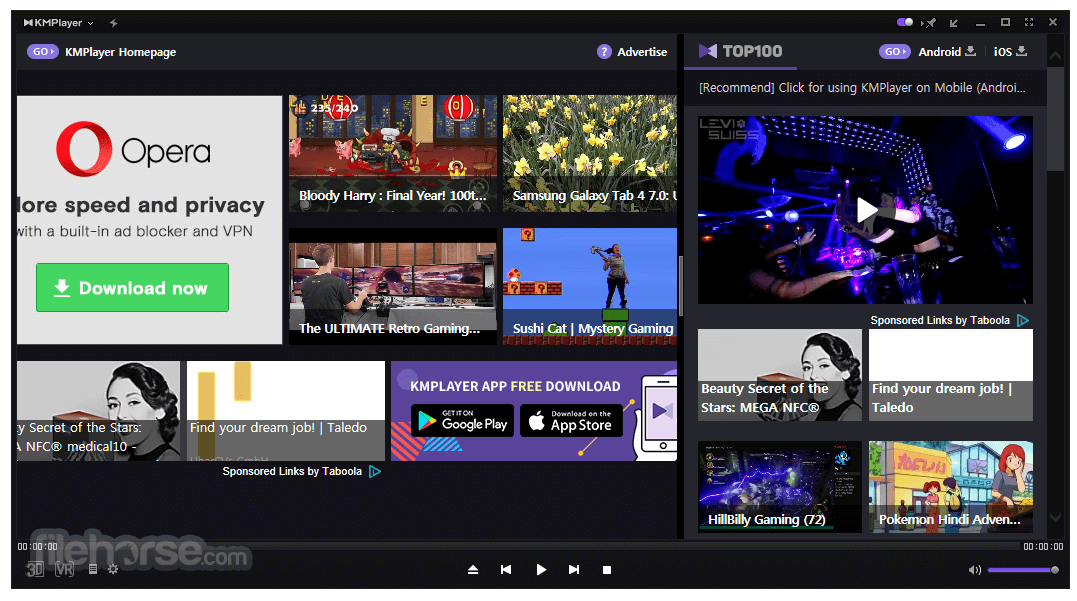
Customizable Interface and Skin Options
KMPlayer understands that aesthetics play a significant role in user satisfaction. To cater to diverse tastes, it offers extensive customization options, allowing users to tailor the interface according to their preferences.
Customization Features:
- Skins and Themes: Choose from a variety of skins and themes to change the player’s appearance. Whether you prefer a minimalist look or a feature-rich interface, KMPlayer has options to match your style.
- Interface Layout: Adjust the layout of control panels, toolbars, and other elements to suit your usage habits. This flexibility ensures that frequent functions are easily accessible.
- Color Schemes: Modify color settings to enhance visual comfort, especially during extended viewing sessions.
Benefits:
- Enhanced User Experience: A personalized interface can make media consumption more enjoyable and efficient.
- Accessibility: Customization options can improve accessibility for users with specific visual or functional needs.
Comparison of Customization: KMPlayer vs. Others
| Customization Aspect | KMPlayer | VLC Media Player | PotPlayer |
|---|---|---|---|
| Skin Availability | Extensive | Limited | Extensive |
| Layout Adjustments | Yes | Basic | Yes |
| Color Scheme Options | Yes | Limited | Yes |
| Advanced Themes | Yes | No | Yes |
User Testimonials:
- “I love how KMPlayer allows me to customize the interface to match my personal style. It makes watching videos more enjoyable.” – Emily, Designer
- “The variety of skins available in KMPlayer is fantastic. I can switch themes based on my mood or the time of day.” – Mark, Gamer
Personal Insight: One of the standout aspects of KMPlayer is its ability to balance aesthetics with functionality. The customizable interface doesn’t just look good it also enhances usability by allowing users to arrange controls and features in a way that best suits their viewing habits.
Technical Customization Tools: KMPlayer provides tools and settings within the application that enable users to experiment with different skins and interface layouts. This hands-on approach empowers users to actively shape their media playback experience.
Conclusion of Customization Section: KMPlayer’s extensive customization options ensure that the player not only meets functional needs but also aligns with individual aesthetic preferences, enhancing overall user satisfaction.

Subtitle Synchronization and Editing Tools
Accurate and customizable subtitle management is essential for a seamless viewing experience, especially for foreign films, documentaries, and content with multiple language tracks. KMPlayer excels in providing comprehensive tools for subtitle synchronization and editing.
Subtitle Synchronization:
- Real-Time Adjustments: Users can adjust subtitle timing on the fly to ensure perfect sync with the video playback.
- Drag-and-Drop: Easily reposition subtitles on the screen to enhance readability or accommodate different display settings.
- Multiple Subtitle Support: Manage and switch between multiple subtitle tracks without restarting the video.
Editing Tools:
- Text Modification: Directly edit subtitle text within KMPlayer, allowing changes to font, size, color, and style for improved readability.
- File Saving: Save modified subtitles for consistent display in future viewings.
- Format Conversion: Convert subtitles between different formats (e.g., SRT to ASS) to enhance compatibility with various media files.
Advanced Features:
- Subtitle Explorer: Provides a detailed overview of all subtitles associated with a video, enabling users to manage and edit them efficiently.
- Synchronization History: Keeps track of previous synchronization settings, allowing users to revert to earlier adjustments if needed.
Benefits:
- Improved Viewing Experience: Accurate subtitle timing and clear formatting enhance comprehension and enjoyment.
- Flexibility: Tailor subtitles to personal preferences, making content more accessible and enjoyable.
Comparison of Subtitle Tools: KMPlayer vs. Others
| Subtitle Feature | KMPlayer | VLC Media Player | PotPlayer |
|---|---|---|---|
| Real-Time Sync | Yes | Yes | Yes |
| Subtitle Editing | Advanced | Limited | Advanced |
| Multiple Subtitle Tracks | Yes | Yes | Yes |
| Customization Options | Extensive | Basic | Extensive |
User Testimonials:
- “KMPlayer’s subtitle synchronization is incredibly precise. I can adjust subtitles in real-time without any lag.” – Liam, Foreign Language Learner
- “Being able to edit subtitle fonts and colors directly in KMPlayer makes my viewing much more comfortable.” – Olivia, Avid Movie Watcher
Technical Insights: KMPlayer leverages efficient processing algorithms to ensure subtitles remain perfectly synchronized even during high-resolution playback. The integration of advanced subtitle formats like ASS and SSA allows for intricate formatting and styling, catering to users who demand more than basic subtitle capabilities.
Personal Opinion: From a user perspective, KMPlayer’s subtitle tools are indispensable. The ability to fine-tune subtitle settings without leaving the application adds a layer of convenience that enhances the overall media consumption experience.
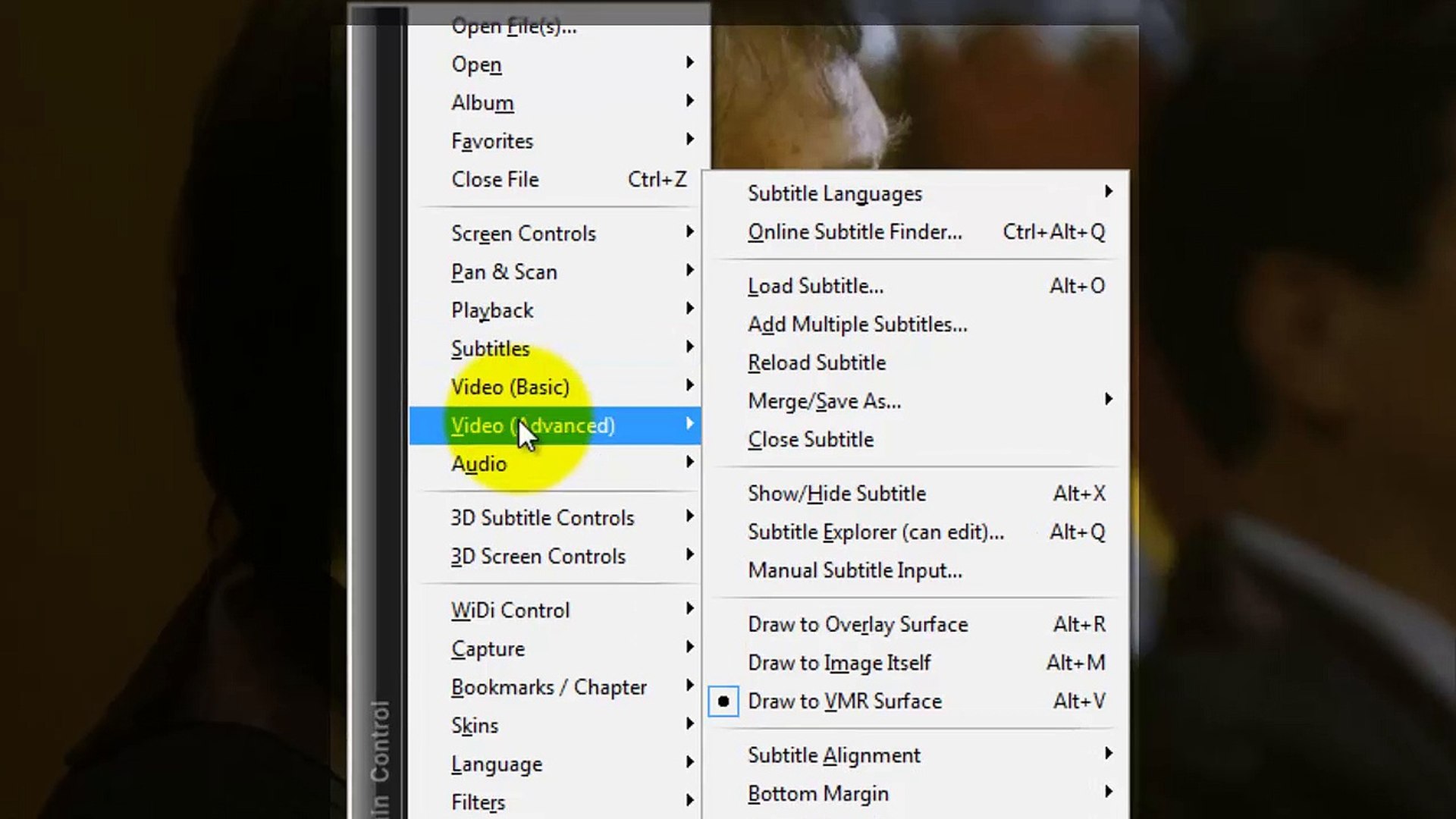
How to Use KMPlayer Effectively
Maximizing the potential of KMPlayer involves configuring its settings to match your preferences and optimizing its features for an enhanced media playback experience. Here’s how to use KMPlayer effectively by adjusting video and audio settings, leveraging streaming capabilities, and managing your media files efficiently.
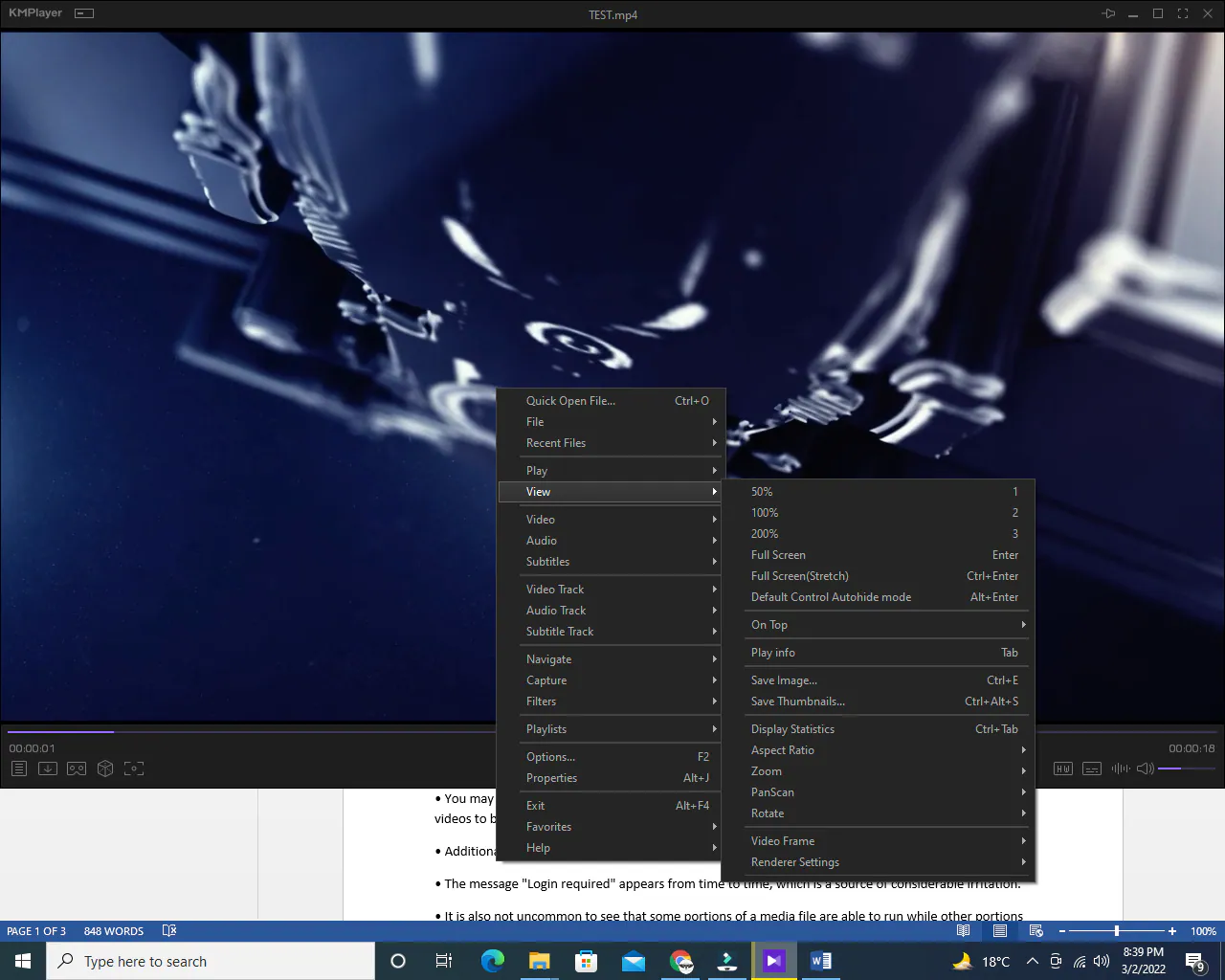
Adjusting Video and Audio Settings for the Best Experience
Optimizing video and audio settings in KMPlayer can significantly enhance your viewing and listening experience. Here’s a step-by-step guide to fine-tuning these settings for optimal performance.
1. Accessing Settings:
- Open KMPlayer and click the menu icon in the upper left corner.
- Navigate to Options > Preferences or press F2 to access the settings menu.
2. Video Settings:
- Hardware Acceleration: Enable hardware acceleration to offload processing tasks to your GPU, ensuring smoother playback.
- Render Quality: Select High Quality Render for better image processing and clearer visuals.
- Scaling: Adjust scaling options to maintain aspect ratios and prevent distortion during video resizing.
3. Image Quality Adjustments:
- Go to Video > Image Settings.
- Use sliders to modify Sharpness, Contrast, and Brightness. Subtle adjustments can make a significant difference in visual clarity.
- Gamma Correction: Adjust the gamma settings to balance the overall brightness and darkness of the video.
4. Audio Settings:
- Navigate to Options > Audio.
- Equalizer: Utilize the built-in equalizer to balance different sound frequencies according to your preferences.
- Effects: Enable effects like Surround Sound or Bass Booster to enrich audio quality.
- Output Settings: Choose the appropriate audio output device, especially if using external speakers or headphones.
5. Video Filters:
- Right-click on the video during playback and select Filters.
- Apply filters such as Sharpening or Noise Reduction to enhance visual clarity, especially for lower-quality videos.
- Adjust Filter Intensity: Fine-tune the intensity of each filter to achieve the desired visual effect.
6. Codec Management:
- Ensure that you have the latest codecs installed by visiting the KMPlayer website or using third-party codec management tools.
- Regularly update KMPlayer to benefit from performance enhancements and new codec support.
7. Reset Settings if Needed:
- If adjustments lead to unsatisfactory playback, reset KMPlayer to default settings by pressing F2 and selecting the Reset option.
Comparison of Settings Adjustments: KMPlayer vs. Others
| Setting Aspect | KMPlayer | VLC Media Player | PotPlayer |
|---|---|---|---|
| Hardware Acceleration | Yes | Yes | Yes |
| Advanced Equalizer | Yes | Yes | Yes |
| Video Scaling Options | Extensive | Limited | Extensive |
| Real-Time Filters | Yes | Yes | Yes |
| Easy Resetting Options | Yes | Yes | Yes |
Personal Tips:
- Save Presets: After configuring settings to your liking, save them as presets for easy access in future sessions.
- Frequent Adjustments: Regularly tweak settings based on the type of media you’re consuming to maintain optimal performance.
- Experimentation: Don’t hesitate to experiment with different settings to discover what works best for your viewing and listening preferences.
Personal Insight: In my experience, spending a few minutes adjusting the video and audio settings can dramatically enhance the overall media experience. KMPlayer’s intuitive interface makes it easy to experiment with different configurations until you find the perfect balance.

Using KMPlayer for Streaming and Online Playback
KMPlayer isn’t just a local media player it also offers robust streaming capabilities, allowing users to access online content effortlessly. Here’s how to leverage KMPlayer for streaming and online playback.
1. Streaming URLs:
- Open KMPlayer and click on the Open File menu.
- Select the Streaming URL option.
- Paste the desired channel’s URL into the provided field.
- Click OK to start streaming the content.
2. Online Content Integration:
- KMPlayer seamlessly integrates with various online sources, allowing users to stream live TV channels, online videos, and other internet-based content.
- Supported sources include popular platforms like YouTube, Vimeo, and various IPTV streams.
3. Bookmarking Favorite Channels:
- Create bookmarks for frequently accessed streaming URLs for quick and easy access.
- Organize bookmarks into categories such as “Most Recent” or “Favorites” for better management.
4. Screen Mirroring and Wi-Fi File Sharing:
- Screen Mirroring: Stream content from your PC to other devices like TVs or projectors using Wi-Fi.
- Wi-Fi File Sharing: Share media files wirelessly with other devices on the same network, enhancing accessibility.
5. Enhanced Subtitle Settings for Streaming:
- Utilize KMPlayer’s subtitle synchronization and editing tools to manage subtitles in streamed content.
- Adjust subtitle settings in real-time to match the streaming quality and ensure clarity.
Benefits:
- Convenience: Access online content without switching between different applications.
- Flexibility: Stream a wide range of content from various online sources directly within KMPlayer.
- Organization: Manage streaming URLs and favorite channels efficiently through bookmarking features.
Comparison of Streaming Features: KMPlayer vs. Others
| Streaming Feature | KMPlayer | VLC Media Player | PotPlayer |
|---|---|---|---|
| Streaming URLs | Yes | Yes | Limited |
| Online Content Integration | Extensive | Extensive | Limited |
| Screen Mirroring | Yes | No | Limited |
| Wi-Fi File Sharing | Yes | No | Limited |
| Bookmarking Support | Yes | Limited | Yes |
User Testimonials:
- “Streaming my favorite TV channels through KMPlayer is incredibly easy. The integration with online sources is seamless.” – Daniel, Streaming Enthusiast
- “KMPlayer’s ability to mirror my screen to the TV has transformed how I share my media with family and friends.” – Emma, Tech Savvy User
Technical Insights: KMPlayer leverages modern streaming protocols and efficient buffering techniques to ensure smooth playback even on slower internet connections. Its ability to handle multiple streaming sources without compromising performance makes it a versatile tool for online media consumption.
Personal Opinion: Using KMPlayer for streaming is a game-changer. The ease with which it handles various streaming URLs and the additional features like screen mirroring make it a comprehensive solution for all your online media needs.

Managing Playlists and Organizing Media Files
Efficient playlist management and media organization are essential for a streamlined viewing experience. KMPlayer offers robust tools to help users manage their media collections effectively.
Creating and Managing Playlists:
- Create New Playlist:
- Navigate to File > Create Playlist.
- Name your playlist for easy identification.
- Adding Media Files:
- Click the Add File button within the playlist window.
- Import multiple files across various formats simultaneously.
- Playlist Formats Supported:
- KMPlayer supports formats like M3U, enhancing compatibility with different devices and organizational preferences.
Organizing Media Files:
- Categorization:
- Group media files into categories such as Most Recent, Favorites, or custom-defined sections.
- Drag and drop items within playlists for easy reorganization.
- Persistent Playlists:
- Ensure that playlists remain consistent across sessions by saving them within KMPlayer.
- Persistent playlists retain their structure and content even after closing and reopening the application.
Channel Management:
- Importing Channels:
- Import IPTV channels by adding them to your playlist.
- Organize channels into categorized lists for quick access.
- Customizing Display Settings:
- Adjust display settings and font selections to enhance readability and navigation within playlists.
Benefits:
- Efficiency: Quickly access and play your favorite media without searching through folders.
- Customization: Tailor your playlists to match your viewing habits and preferences.
- Organization: Maintain a well-organized media library, reducing clutter and enhancing the overall user experience.
Comparison of Playlist Management: KMPlayer vs. Others
| Playlist Feature | KMPlayer | VLC Media Player | PotPlayer |
|---|---|---|---|
| Create Playlists | Yes | Yes | Yes |
| Multiple Formats Support | Yes | Yes | Yes |
| Persistent Playlists | Yes | Limited | Yes |
| Custom Categories | Yes | Limited | Yes |
| Channel Management | Yes | No | Limited |
User Testimonials:
- “Managing my extensive media library in KMPlayer is a breeze. The playlist features make finding and playing my favorite files quick and easy.” – Sophia, Media Archivist
- “I love how KMPlayer allows me to organize my playlists into categories. It’s incredibly helpful for separating my movies from my music.” – Ethan, Music Lover
Technical Insights: KMPlayer employs a hierarchical playlist structure, allowing users to create nested categories and sub-playlists. This advanced organizational system caters to users with large or varied media libraries, ensuring that finding specific content is always straightforward.
Personal Opinion: From practical usage, KMPlayer’s playlist management tools significantly enhance media accessibility and organization. The ability to categorize and maintain persistent playlists ensures that users can enjoy a clutter-free and efficient media playback environment.
KMPlayer for Different Platforms
KMPlayer’s versatility extends across multiple platforms, ensuring that users can enjoy a consistent and high-quality media playback experience whether they’re on Windows, Mac, Android, or iOS. Here’s how KMPlayer adapts to different operating systems, each with its unique features and performance metrics.
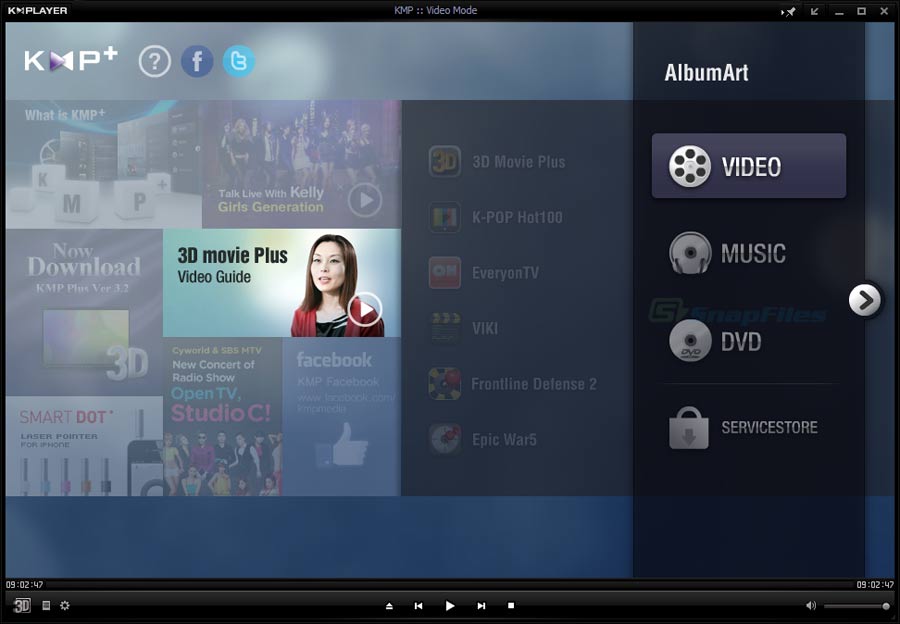
KMPlayer for Windows – Features and Performance
On Windows, KMPlayer stands out with its rich feature set and exceptional performance, catering to a broad spectrum of users from casual viewers to multimedia professionals.
Features:
- High-Definition Playback: Supports 4K, UHD, and 3D video formats, delivering stunning visual quality.
- Comprehensive Format Support: Plays a wide range of video and audio formats without needing additional codecs.
- Customizable Interface: Offers various skins and themes, allowing users to personalize the player’s appearance.
- Advanced Playback Controls: Includes features like playback speed adjustment, bookmarking, and multiple subtitle support.
- Screen Capture: Enables users to take screenshots of videos or capture audio during playback.
Performance: KMPlayer is optimized for high performance on Windows, ensuring smooth playback even on older hardware. Its efficient use of system resources through hardware acceleration minimizes CPU strain, enabling seamless viewing experiences.
User Experience: Windows users benefit from KMPlayer’s intuitive interface and robust performance. The player’s capability to handle high-resolution and 3D content without lag or stutter makes it a preferred choice for those seeking top-tier media playback.
Comparison of KMPlayer on Windows vs. Others
| Feature | KMPlayer | VLC Media Player | PotPlayer |
|---|---|---|---|
| High-Definition Support | Yes | Yes | Yes |
| Custom Skins | Yes | Limited | Yes |
| Advanced Playback Controls | Yes | Yes | Yes |
| Performance Optimization | Excellent | Good | Excellent |
| Screen Capture | Yes | No | Yes |
Technical Insights: KMPlayer leverages DirectX and OpenGL for video rendering, enhancing compatibility with a wide range of graphics cards. This ensures that content is displayed with optimal clarity and performance, regardless of the hardware specifications.
Personal Experience: Running KMPlayer on a Windows 10 machine with modest specs, I experienced smooth playback of both standard and high-resolution videos. The player’s ability to auto-detect and adjust settings based on the media type ensures a hassle-free experience.

KMPlayer for Mac – How It Compares to Other Media Players
KMPlayer for Mac brings the same robust feature set found in its Windows counterpart, tailored to fit the macOS environment. It competes with other macOS media players like VLC and 5KPlayer, each offering unique strengths.
Features:
- Extensive Format Support: Plays a wide array of video and audio formats natively.
- High-Definition Playback: Handles Blu-rays, DVDs, and high-resolution video formats seamlessly.
- Built-in Codec: Eliminates the need for external codec installations, simplifying media playback.
- User-Friendly Interface: Mirrors the intuitive design of KMPlayer on other platforms, ensuring ease of use.
Comparison with Other Media Players:
- VLC Media Player: While VLC offers slightly broader format support and better energy efficiency, KMPlayer provides a more customizable interface and advanced subtitle tools.
- 5KPlayer: Known for its elegant design and straightforward functionality, 5KPlayer is ideal for basic playback needs. KMPlayer, however, offers more advanced features suitable for power users.
Performance: KMPlayer for Mac is optimized for macOS, ensuring smooth playback and efficient resource usage. Its ability to play high-definition content without significant performance drops marks it as a reliable choice for Mac users.
User Testimonials:
- “KMPlayer on my Mac handles all my media files effortlessly, including HD and 3D content. It’s become my primary media player.” – Natalie, Graphic Designer
- “The built-in codec support in KMPlayer simplifies my media consumption on macOS. I no longer need to install additional tools.” – David, Video Editor
Technical Insights: KMPlayer for Mac utilizes macOS’s native rendering technologies to ensure compatibility and performance. The integration with macOS’s system libraries allows for smooth operation and a seamless user experience.
Personal Opinion: Comparing KMPlayer to alternatives like VLC on macOS, I find KMPlayer’s customization options and advanced subtitle management to be superior, making it a better fit for users seeking more control over their media playback experience.

KMPlayer for Android and iOS – Mobile Playback Experience
KMPlayer extends its robust feature set to mobile platforms, offering a consistent and high-quality playback experience on both Android and iOS devices. Its mobile versions are designed to maximize playback quality and support a wide range of video formats, ensuring flexibility and convenience on the go.
Features:
- Wide Format Support: Handles popular formats like MP4, AVI, MKV, and more.
- High-Quality Playback: Optimized for smooth playback on mobile screens, supporting up to 1080p resolution.
- User-Friendly Interface: Intuitive design tailored for touch navigation, making it easy to control playback on smaller screens.
- Streaming Capabilities: Supports streaming from various online sources, enhancing accessibility to online content.
Comparison with Mobile Alternatives:
- MX Player (Android): Known for its excellent codec support and multi-core decoding, MX Player is a strong competitor. KMPlayer matches closely in terms of format support but distinguishes itself with additional streaming features.
- VLC for Mobile: VLC offers robust streaming and format support, similar to KMPlayer. However, KMPlayer’s interface customization provides a more personalized user experience.
- Infuse (iOS): Infuse is celebrated for its elegant design and seamless integration with Apple’s ecosystem. KMPlayer, while equally functional, offers more advanced playback features and customization options.
Performance: KMPlayer ensures efficient resource usage on mobile devices, providing smooth playback without draining the battery excessively. Its ability to adapt to different screen sizes and resolutions means users enjoy consistent performance across various devices.
User Testimonials:
- “KMPlayer on my Android phone plays all my videos without any issues. The interface is intuitive, and the streaming feature is a major plus.” – Ryan, Mobile User
- “Using KMPlayer on my iPhone is a delight. The playback quality and ease of use stand out compared to other media players.” – Isabella, iOS User
Technical Insights: KMPlayer for mobile leverages device-specific optimizations, ensuring compatibility with various hardware configurations. Features like gesture controls for volume and brightness adjustment enhance the overall user experience, making media consumption more interactive.
Personal Opinion: In my mobile usage, KMPlayer offers a balanced blend of functionality and ease of use. Its ability to handle a wide range of formats and integrate streaming seamlessly makes it a top choice for on-the-go media playback.

Comparing KMPlayer with Other Media Players
Choosing the right media player can be daunting given the myriad options available. KMPlayer competes with several top-tier players, each offering unique strengths. This section compares KMPlayer with popular alternatives like VLC Media Player, PotPlayer, and Windows Media Player, highlighting their differences in terms of user interface, features, performance, and compatibility.
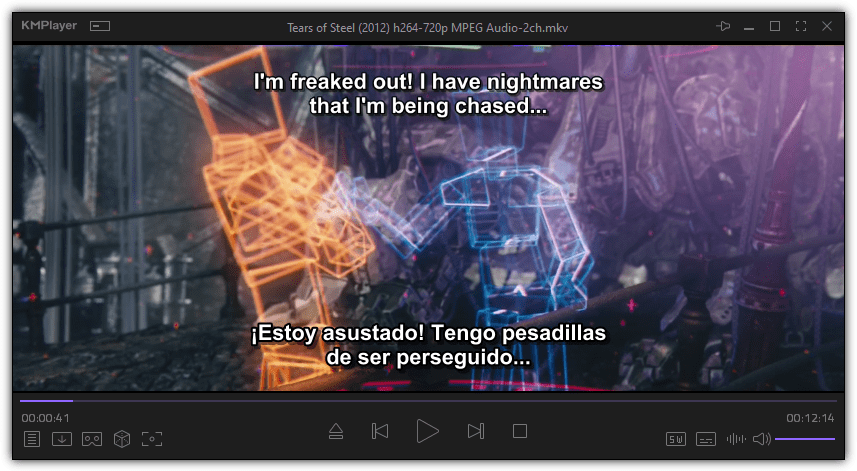
KMPlayer vs. VLC Media Player: Which One is Better?
KMPlayer and VLC Media Player are two of the most popular media players available, each with its dedicated user base. Understanding their strengths and weaknesses can help users make informed decisions based on their specific needs.
User Interface:
- KMPlayer: Offers a modern, customizable interface with various skins and themes, appealing to users who enjoy personalizing their media experience.
- VLC Media Player: Maintains a simple, straightforward design focused on functionality over aesthetics, suitable for users who prefer minimalism.
Features:
- KMPlayer: Excels with advanced features like 4K and 8K playback, SIMD (Single Instruction, Multiple Data) enhancements, and extensive subtitle customization.
- VLC Media Player: Known for its robust streaming capabilities, VLC allows video streaming from numerous sources, including local drives, network streams, and online platforms.
Performance:
- KMPlayer: While highly capable, KMPlayer’s heavier feature set may lead to performance issues on lower-spec systems.
- VLC Media Player: Recognized for its lightweight nature and stability across various platforms, making it a reliable choice for systems with limited resources.
Compatibility:
- KMPlayer: Available on Windows, Android, and iOS, but lacks support for Linux and Chromebook platforms.
- VLC Media Player: Boasts broader compatibility, supporting Windows, Mac, Linux, iOS, Android, and Chromebook, catering to a wider audience.
Comparison Table: KMPlayer vs. VLC Media Player
| Feature | KMPlayer | VLC Media Player |
|---|---|---|
| Customizable Interface | Extensive | Basic |
| Streaming Capabilities | Yes | Extensive |
| High-Resolution Playback | Yes | Yes |
| Platform Compatibility | Limited | Extensive |
| Performance on Low Specs | Moderate | Excellent |
User Preferences:
- KMPlayer Users: Typically prefer advanced features and customization, making it ideal for those who seek more control over their media playback experience.
- VLC Users: Often favor reliability and broad compatibility, making VLC a go-to choice for users who value stability and versatility.
Conclusion: The choice between KMPlayer and VLC Media Player hinges on user preferences. Those who prioritize advanced features and customization may lean towards KMPlayer, while users seeking a lightweight, highly compatible player may find VLC to be more suitable.
KMPlayer vs. PotPlayer: Performance and Features Comparison
PotPlayer, developed by Kakao, is another formidable contender in the media player arena. Comparing KMPlayer with PotPlayer reveals nuanced differences in performance, features, and user experience.
Performance:
- PotPlayer: Renowned for its superior speed and stability, PotPlayer handles a wide range of media formats with minimal glitches. Its lightweight design ensures efficient resource usage.
- KMPlayer: While offering robust performance, especially for high-resolution content, KMPlayer may sometimes experience slower performance on lower-spec systems due to its comprehensive feature set.
Features:
- PotPlayer: Offers extensive customization options, advanced video filtering, and built-in subtitle support. It also supports high-definition playback, including 3D content.
- KMPlayer: Similarly provides advanced playback features, including high-resolution support and extensive subtitle customization. However, KMPlayer’s customization capabilities are slightly more limited compared to PotPlayer.
User Interface:
- PotPlayer: Features a highly customizable interface with detailed settings and extensive user controls, appealing to advanced users who desire granular control.
- KMPlayer: While customizable, KMPlayer’s interface is more streamlined, making it accessible for both novice and seasoned users.
Codec Support:
- Both players: Offer extensive codec support, ensuring seamless playback across a wide array of formats without needing additional codec installations.
Comparison Table: KMPlayer vs. PotPlayer
| Feature | KMPlayer | PotPlayer |
|---|---|---|
| Customization Options | Extensive | Extensive |
| Performance | Good | Superior |
| High-Resolution Playback | Yes | Yes |
| 3D Playback | Yes | Yes |
| Subtitle Management | Advanced | Advanced |
User Preferences:
- PotPlayer Users: Often consist of power users who value speed, extensive customization, and advanced filtering options.
- KMPlayer Users: Include both casual viewers and enthusiasts who appreciate ease of use combined with a rich feature set.
Conclusion: While both KMPlayer and PotPlayer offer powerful features and high performance, PotPlayer edges out slightly in terms of speed and advanced customization options. However, KMPlayer remains a strong contender, particularly for users who prioritize a balance between functionality and user-friendliness.

KMPlayer vs. Windows Media Player: Modern Alternatives
Windows Media Player (WMP) has been a staple in the media playback landscape for decades. However, modern alternatives like KMPlayer offer enhanced functionalities that surpass WMP’s traditional capabilities.
User Interface:
- KMPlayer: Features a modern, customizable interface with various skins and themes, catering to contemporary user preferences.
- Windows Media Player: Maintains a classic interface with limited customization options, focusing more on basic functionality.
Format Support:
- KMPlayer: Supports a vast array of media formats, including high-definition and 3D content, without requiring additional codecs.
- Windows Media Player: Limited format support, often necessitating codec installations for less common formats.
Advanced Features:
- KMPlayer: Offers features like URL streaming, screen capture, subtitle editing, and hardware acceleration, providing a comprehensive media playback experience.
- Windows Media Player: Primarily focuses on basic playback features, with limited advanced functionalities.
Performance:
- KMPlayer: Optimized for high-performance playback, especially for high-resolution media, ensuring smooth and efficient operation.
- Windows Media Player: Adequate for basic media playback but may struggle with high-definition and complex formats due to its older architecture.
Compatibility:
- KMPlayer: Available on multiple platforms Windows, Mac, Android, and iOS providing a consistent experience across devices.
- Windows Media Player: Exclusively for Windows, limiting its accessibility to a broader range of devices.
Comparison Table: KMPlayer vs. Windows Media Player
| Feature | KMPlayer | Windows Media Player |
|---|---|---|
| Customization | Extensive | Limited |
| High-Definition Support | Yes | Limited |
| Subtitle Management | Advanced | Basic |
| Streaming Capabilities | Yes | Limited |
| Platform Availability | Multi-platform | Windows only |
User Testimonials:
- “KMPlayer offers so many more features compared to Windows Media Player. The customization options alone make it worth the switch.” – Grace, Student
- “I found Windows Media Player too basic for my needs. KMPlayer provides the advanced functionalities I require for my multimedia projects.” – Michael, Content Creator
Technical Insights: KMPlayer leverages modern multimedia frameworks and advanced video rendering technologies to deliver superior performance and compatibility, addressing many of the limitations inherent in older players like Windows Media Player.
Personal Opinion: Transitioning from Windows Media Player to KMPlayer offers a significant upgrade in terms of functionality and user experience. KMPlayer’s modern features and extensive support make it a compelling alternative for users seeking more from their media player.
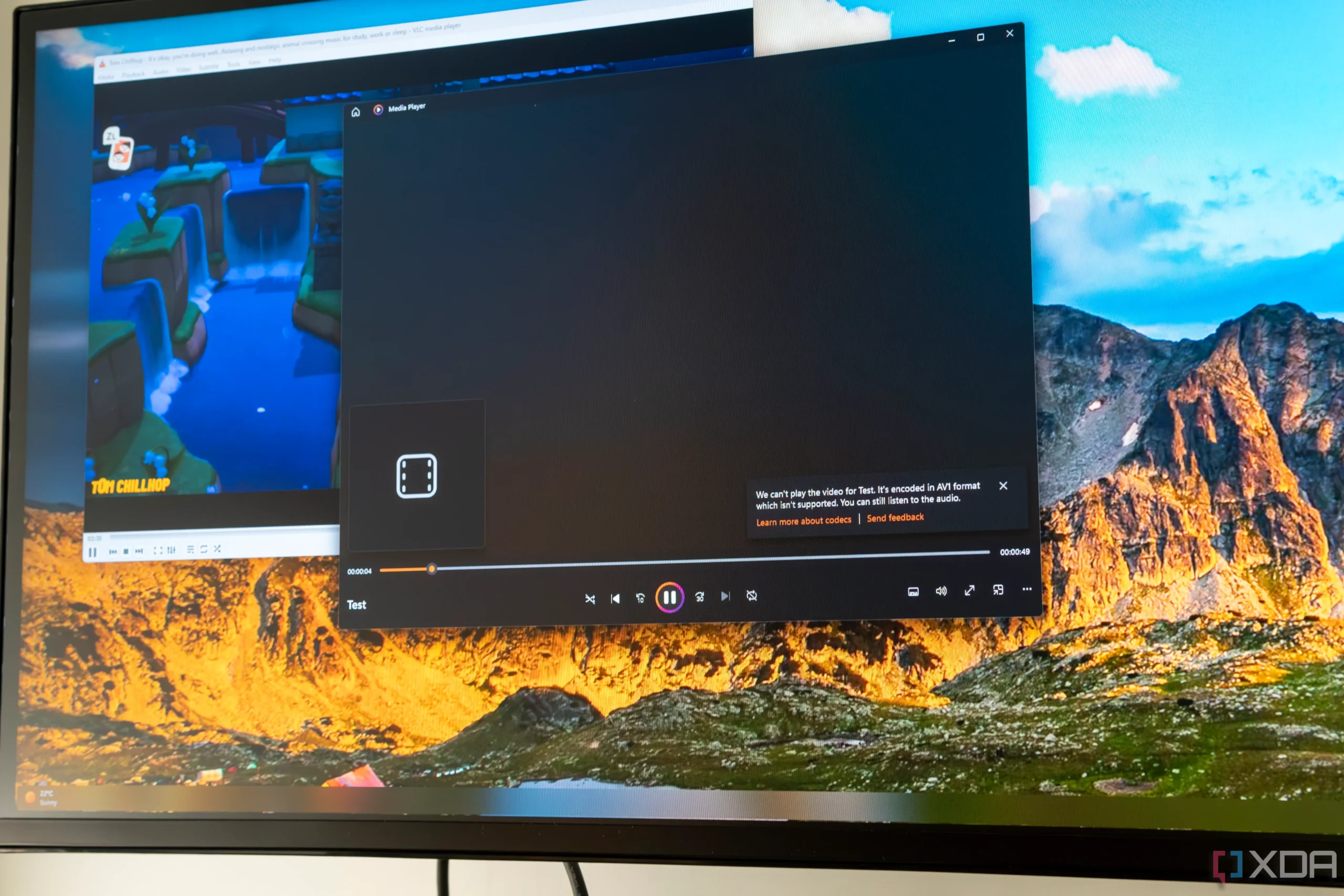
Troubleshooting and Common Issues with KMPlayer
While KMPlayer is a robust and versatile media player, users may occasionally encounter issues such as playback errors, crashes, or subtitle synchronization problems. This section identifies common problems and provides practical troubleshooting steps to enhance your KMPlayer experience.
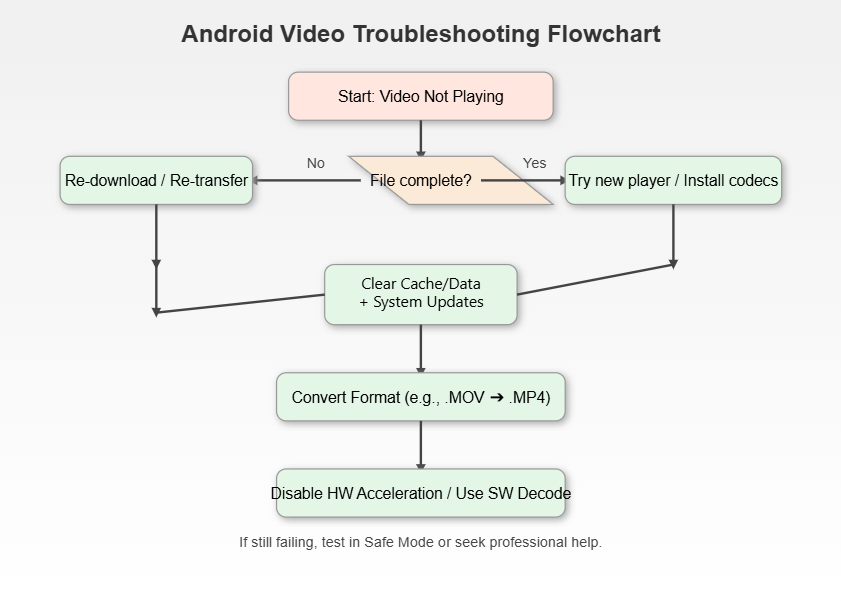
Fixing Playback Errors and Crashes
Encountering playback errors or experiencing frequent crashes can disrupt your media enjoyment. Here are some common issues and how to resolve them:
1. Slow Playback of 4K Videos:
- Issue: Videos may lag or play in slow motion, especially high-resolution ones.
- Solution:
- Hardware Acceleration: Enable hardware acceleration by navigating to Options > Preferences > Video and checking the Hardware Acceleration option.
- Renderer Selection: Switch to a different renderer such as DXVA2 Native by right-clicking on the video, selecting Options > P, and choosing the appropriate renderer.
- System Resources: Close unnecessary applications to free up system resources for smoother playback.
2. Codec Compatibility:
- Issue: Certain video formats may fail to play due to missing or incompatible codecs.
- Solution:
- Update KMPlayer: Ensure you have the latest version of KMPlayer, which may include updated codec support.
- Alternative Players: Try using alternative players like MPC-HC which might offer better compatibility for specific formats.
- Manual Codec Installation: If needed, install a comprehensive codec pack compatible with KMPlayer.
3. Audio Sync Issues:
- Issue: Audio may be out of sync with the video, leading to a disjointed viewing experience.
- Solution:
- Audio Codec Switching: Switch from DTS to AC3 codecs via Options > Preferences > Audio.
- Backup Tools: Use programs like MakeMKV to perform a full-disc backup before playback, reducing the chances of sync issues.
- Adjust Audio Settings: Fine-tune audio settings within KMPlayer to align audio and video streams accurately.
4. Crashes During Playback:
- Issue: KMPlayer may crash unexpectedly during video playback.
- Solution:
- System Codecs: Check and update system codecs to ensure compatibility.
- Software Conflicts: Identify and resolve conflicts with other software running in the background.
- System Resources Monitoring: Use Task Manager to monitor and manage system resource usage during playback.
- Error Logs: Utilize KMPlayer’s error recording feature found in Options > Preferences > Record to trace and address crash causes.
Troubleshooting Table: Common Issues and Solutions
| Issue | Possible Causes | Solutions |
|---|---|---|
| Slow Playback | Hardware limitations, settings | Enable hardware acceleration, change renderer |
| Codec Compatibility | Missing codecs | Update KMPlayer, use codec packs, try alternate players |
| Audio Sync Issues | Incompatible codecs, system lag | Switch audio codecs, adjust audio settings |
| Crashes During Playback | Software conflicts, outdated codecs | Update codecs, monitor system resources, check error logs |
Technical Insights: KMPlayer’s flexibility in adjusting renderers and utilizing hardware acceleration can address many playback performance issues. Additionally, keeping the software and codecs updated is paramount in preventing and resolving compatibility problems.
Personal Experience: I’ve encountered occasional crashes when playing high-definition content on an older system. Enabling hardware acceleration and updating the GPU drivers resolved these issues, resulting in a stable playback experience.

Resolving Subtitle and Codec Issues
Subtitle and codec issues are among the most common problems users face with KMPlayer. Proper configuration and understanding of KMPlayer’s tools can effectively mitigate these issues.
1. Subtitle Display Problems:
- Issue: Subtitles may lag, be misaligned, or fail to display correctly.
- Solution:
- Subtitle Processing Settings: Press F2 to open settings, navigate to Subtitle Processing, and select Multi-sub/etc. Disable the Force user’s font settings option to improve subtitle rendering for advanced formats like .ass or .ssa.
- External Subtitle Files: Use external subtitle files (e.g., .srt or .ass) instead of embedded ones to gain full control over subtitle placement and synchronization.
- Subtitle Explorer: Utilize this feature for detailed management and adjustment of subtitle settings.
2. Codec Issues:
- Issue: Playback glitches or unsupported formats due to codec problems.
- Solution:
- Update Codecs: Ensure you have the latest codecs installed by updating KMPlayer or manually installing a comprehensive codec pack.
- Change Renderer: Switch to different renderers such as Haali’s Video Renderer for better compatibility.
- Filter Adjustment: Fine-tune video filters like Sharpening or Softening to enhance video quality and reduce glitches.
- Revert to Defaults: If issues persist, reset KMPlayer settings to default by pressing F2 and selecting the Reset option.
3. Subtitle Editing:
- Issue: Need to modify subtitle text for better readability or accuracy.
- Solution:
- Edit Directly: Use KMPlayer’s subtitle editing tools to change fonts, sizes, and colors.
- Save Modified Files: Save edited subtitle files to ensure consistent display in future playbacks.
Comparison Table: Subtitle and Codec Solutions
| Problem | KMPlayer Solution | VLC Media Player | PotPlayer |
|---|---|---|---|
| Subtitle Lag | Adjust Subtitle Processing Settings | Adjust Timing Props | Adjust Subtitle Settings |
| Misaligned Subtitles | Use External Subtitle Files | Use Subtitle Sync Tools | Use Subtitle Sync Tools |
| Codec Incompatibility | Update or Install Codecs | Update Codecs | Update Codecs |
| Playback Glitches | Change Renderer, Adjust Filters | Adjust Playback Settings | Change Renderer, Adjust Filters |
Benefits:
- Enhanced Viewing Experience: Accurate subtitles and smooth playback significantly improve the overall media consumption experience.
- Flexibility: Users gain the ability to tailor subtitle management and codec settings to their specific needs.
User Testimonials:
- “After adjusting the subtitle settings in KMPlayer, my foreign films have never looked better. The sync is perfect now.” – Lucas, Language Learner
- “Codec issues were a hassle until I learned how to manage them within KMPlayer. Now, all my videos play without a hitch.” – Ava, Content Creator
Technical Insights: KMPlayer’s comprehensive settings and tools for subtitle and codec management empower users to troubleshoot and resolve issues independently. Understanding and utilizing these tools can preempt common playback disruptions and maintain a smooth media experience.
Personal Opinion: Effective subtitle and codec management is crucial for a seamless viewing experience. KMPlayer’s robust tools make it easier to address these issues, ensuring that users can enjoy their media without interruptions or inaccuracies.

Optimizing KMPlayer for Better Performance
Optimizing KMPlayer ensures that you get the most out of its features while maintaining smooth and efficient media playback. Here are essential steps to enhance KMPlayer’s performance:
1. Enable Hardware Acceleration:
- Benefit: Offloads video processing tasks to your GPU, reducing CPU load and ensuring smoother playback.
- How to Enable:
- Go to Options > Preferences > Video.
- Check the Hardware Acceleration option.
2. Update Graphics Drivers:
- Benefit: Ensures compatibility and takes advantage of the latest performance improvements and bug fixes.
- How to Update:
- Visit your GPU manufacturer’s website (NVIDIA, AMD, Intel) and download the latest drivers.
- Install the drivers and restart your computer.
3. Adjust Video Output Settings:
- Benefit: Enhances video quality and rendering performance.
- How to Adjust:
- Navigate to Options > Preferences > Video.
- Select a suitable Video Renderer (e.g., Haali’s Video Renderer for better compatibility).
4. Optimize Audio Settings:
- Benefit: Balances audio quality with system resource usage.
- How to Optimize:
- Go to Options > Preferences > Audio.
- Use the built-in equalizer to adjust sound frequencies according to your preferences.
- Enable audio effects like Surround Sound or Bass Booster if desired.
5. Reduce Background Processes:
- Benefit: Frees up system resources for KMPlayer, enhancing overall performance.
- How to Reduce:
- Close unnecessary applications running in the background.
- Use Task Manager to monitor and manage resource usage.
6. Manage Playlist Size:
- Benefit: Smaller playlists load faster and reduce memory usage.
- How to Manage:
- Regularly clean and organize your playlists, removing unnecessary entries.
7. Customize Playback Preferences:
- Benefit: Tailors KMPlayer’s settings to match your specific hardware and usage patterns.
- How to Customize:
- Explore the Preferences menu to adjust settings like buffer sizes, playback speed, and subtitle handling.
Comparison Table: Optimization Steps for KMPlayer vs. Others
| Optimization Aspect | KMPlayer | VLC Media Player | PotPlayer |
|---|---|---|---|
| Hardware Acceleration | Yes | Yes | Yes |
| Graphics Driver Updates | Essential | Essential | Essential |
| Video Output Settings | Extensive | Limited | Extensive |
| Audio Optimization | Advanced | Basic | Advanced |
| Background Process Management | Yes | Yes | Yes |
Benefits:
- Enhanced Performance: Optimized settings ensure smooth and uninterrupted playback experiences.
- Energy Efficiency: Efficient resource usage can lead to lower power consumption, prolonging device battery life on mobile platforms.
User Testimonials:
- “After optimizing the settings in KMPlayer, my 4K videos play flawlessly without any stutter.” – Noah, Video Editor
- “Updating my graphics drivers and enabling hardware acceleration made a noticeable difference in KMPlayer’s performance.” – Mia, Gamer
Technical Insights: KMPlayer’s optimization settings are designed to cater to both high-performance systems and those with limited resources. Understanding and configuring these settings based on your hardware ensures that KMPlayer operates at its best, delivering high-quality playback without compromising system stability.
Personal Opinion: Optimizing KMPlayer can transform your media playback experience, making it smoother and more responsive. Taking the time to adjust settings according to your specific needs can lead to a significant improvement in performance and overall satisfaction.

FAQs
1. Is KMPlayer free to use? Yes, KMPlayer is free to download and use. However, it may display ads during playback. An ad-free version is available for purchase.
2. Does KMPlayer support streaming from online platforms? Yes, KMPlayer allows users to stream content from various online sources by entering streaming URLs directly into the player.
3. Can I customize the appearance of KMPlayer? Absolutely. KMPlayer offers a range of skins and themes, allowing users to personalize the interface to their liking.
4. What should I do if KMPlayer crashes frequently? If KMPlayer crashes frequently, try updating the software and your system codecs. Additionally, ensure that your system meets the minimum requirements and check for software conflicts.
5. Does KMPlayer support subtitles in multiple languages? Yes, KMPlayer supports multiple subtitle tracks and offers advanced synchronization and editing tools to manage subtitles effectively.
Key Takeaways
Extensive Format Support: KMPlayer handles a wide range of video and audio formats without needing additional codecs.
High-Resolution Playback: Supports 4K, 8K, UHD, and 3D content, delivering crystal-clear visuals.
Customization Options: Offers various skins and themes to personalize the media playback interface.
Advanced Features: Includes streaming capabilities, screen capture, and comprehensive subtitle management tools.
Cross-Platform Availability: Accessible on Windows, Mac, Android, and iOS, ensuring consistent functionality across devices.
User-Friendly Interface: Intuitive design caters to both novice and advanced users, enhancing overall usability.
Performance Optimization: Hardware acceleration and efficient resource management ensure smooth playback, even on lower-spec systems.
Regular Updates: Continuous improvements and feature additions keep KMPlayer relevant and feature-rich.
Conclusion
KMPlayer emerges as a top-tier media player that combines versatility, high-performance playback, and user-centric features. Its ability to support a vast array of formats, coupled with high-resolution and 3D playback capabilities, caters to both casual viewers and multimedia enthusiasts. The player’s extensive customization options and advanced subtitle management tools enhance the overall user experience, making it a compelling choice in the competitive media player market.
While KMPlayer faces competition from other well-established players like VLC and PotPlayer, its unique blend of features and performance optimizations set it apart. Users benefit from seamless streaming capabilities, efficient resource usage, and a highly customizable interface, all of which contribute to a superior media consumption experience.
However, potential privacy concerns regarding data logging practices warrant cautious usage. Ensuring that KMPlayer is downloaded from trusted sources and managing permissions appropriately can mitigate these concerns. By balancing its rich feature set with mindful security practices, KMPlayer offers a reliable and powerful solution for all your media playback needs.
In summary, KMPlayer stands out as a comprehensive media player that fulfills diverse multimedia requirements with ease and efficiency. Its ongoing development and user-focused enhancements promise continued excellence, making KMPlayer a valuable addition to any media enthusiast’s toolkit.

